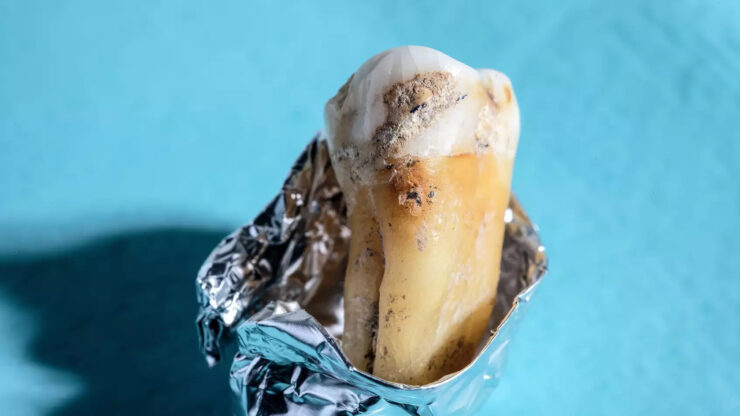According to a recent study, strange bacteria discovered in Neanderthal teeth may one day help in the creation of novel medications.
This ground-breaking study examines dental plaque from ancient and modern individuals to better understand the development of germs in the human mouth.
Simply put, each person has a certain assortment of tiny organisms in their mouth cavity that is referred to as their oral microbiome. Numerous species make up this microbiome, which fluctuates according on a person’s environment and way of life.
Christina Warinner, a biomolecular archaeologist from Harvard University, developed unique methods to look at hardened dental plaque, which is formally known as calculus or tartar, in order to investigate the oral microbiota of our prehistoric ancestors.
Dental calculus is fascinating because it may fossilize while a person is still living, making it a gold mine of ancient DNA and priceless knowledge about our history, according to Warinner.
The process includes extracting several little bits of DNA from a small quantity of hardened tooth calculus. These DNA fragments are jumbled together and come from numerous animals. Warinner may then put these pieces together to determine the various species that are there.
When working with ancient bones, this procedure is made considerably more difficult since the DNA in the tooth calculus may have come from extinct bacteria.
Warinner and her team recently looked at dental calculus samples from 12 extinct Neanderthals, a near relative of ours. Additionally, 34 prehistoric individuals and 18 modern humans who lived 100,000 years ago in Europe and Africa had their samples examined. From these samples, the researchers were able to sequence more than 10 billion DNA fragments and rebuild the genomes of 459 bacteria.
According to the reports of Science, surprisingly, almost 75% of these genomes matched known bacteria discovered in human mouths. The Chlorobium genus has two different forms of bacteria that attracted the interest of researchers. These germs were found in the remains of people who lived between 126,000 and 11,700 years ago in the Upper Pleistocene epoch.
These bacteria don’t quite match any known species, although they resemble C. limicola, which is frequently discovered in water sources around caves.
Warinner thinks that it is likely that the inhabitants of these subterranean habitats acquired these germs through ingesting tainted water. These Chlorobium species were far less common in the dental plaque of people who lived during the last 10,000 years.
Between the Upper Pleistocene and the Holocene epochs (11,700 years ago and the present), people inhabited caves, tamed animals, and introduced contemporary materials like plastic. This stretch of time spans around 100,000 years.
Different bacterial communities have emerged as a result of each of these lifestyle modifications. The variations in chlorobium abundance seem to be related to how our ancestors’ lives changed through time.
The team’s researchers have looked at collections of genes known as biosynthetic gene clusters (BGCs) to determine which enzymes are made by Chlorobium species. By intensively examining these BGCs, which are in charge of producing certain molecules, scientists aim to create novel medications.
The Chlorobium BGCs produced two previously unidentified enzymes that could be involved in photosynthesis when they were introduced to live bacteria.
Warinner said that: “Bacteria are the source of virtually all our antibiotics. We really haven’t discovered any new major classes of antibiotics in the past couple years, and we’re running out. These methods give us the chance to look for potential antibiotic-producing BGCs in the past.”
